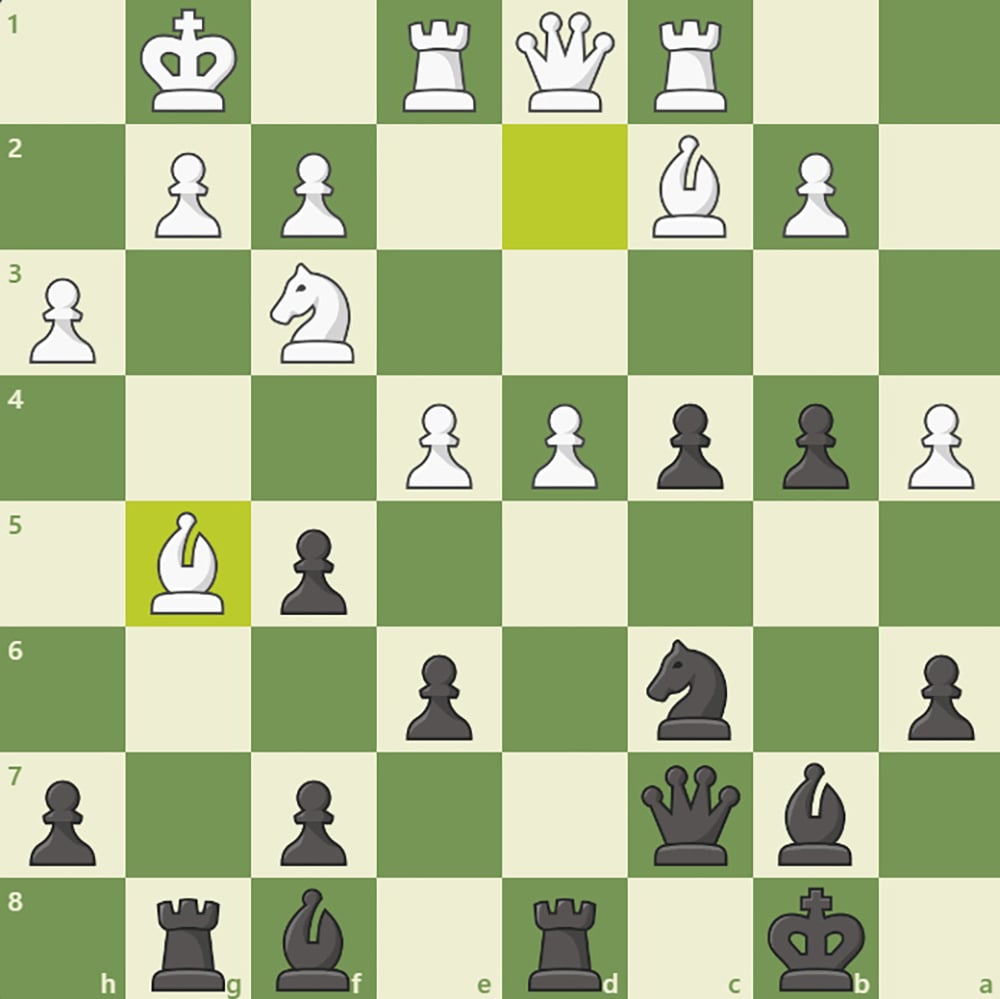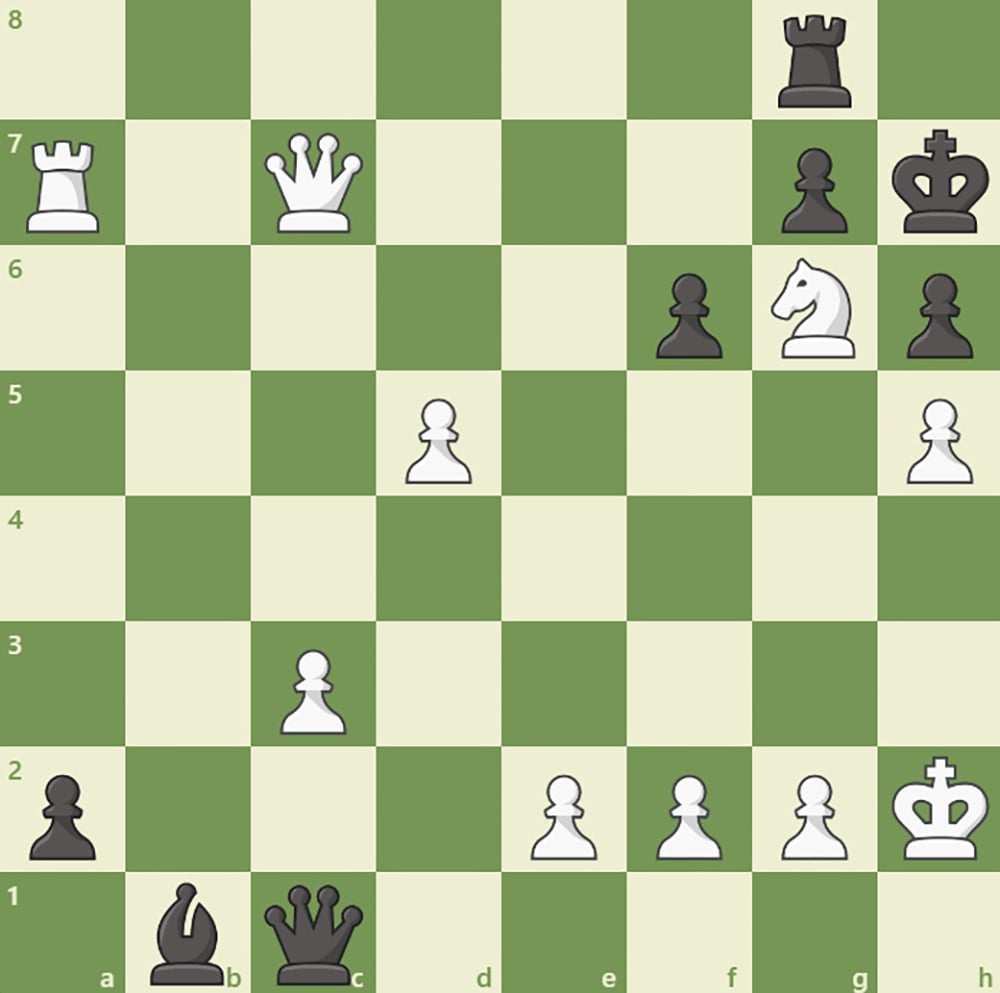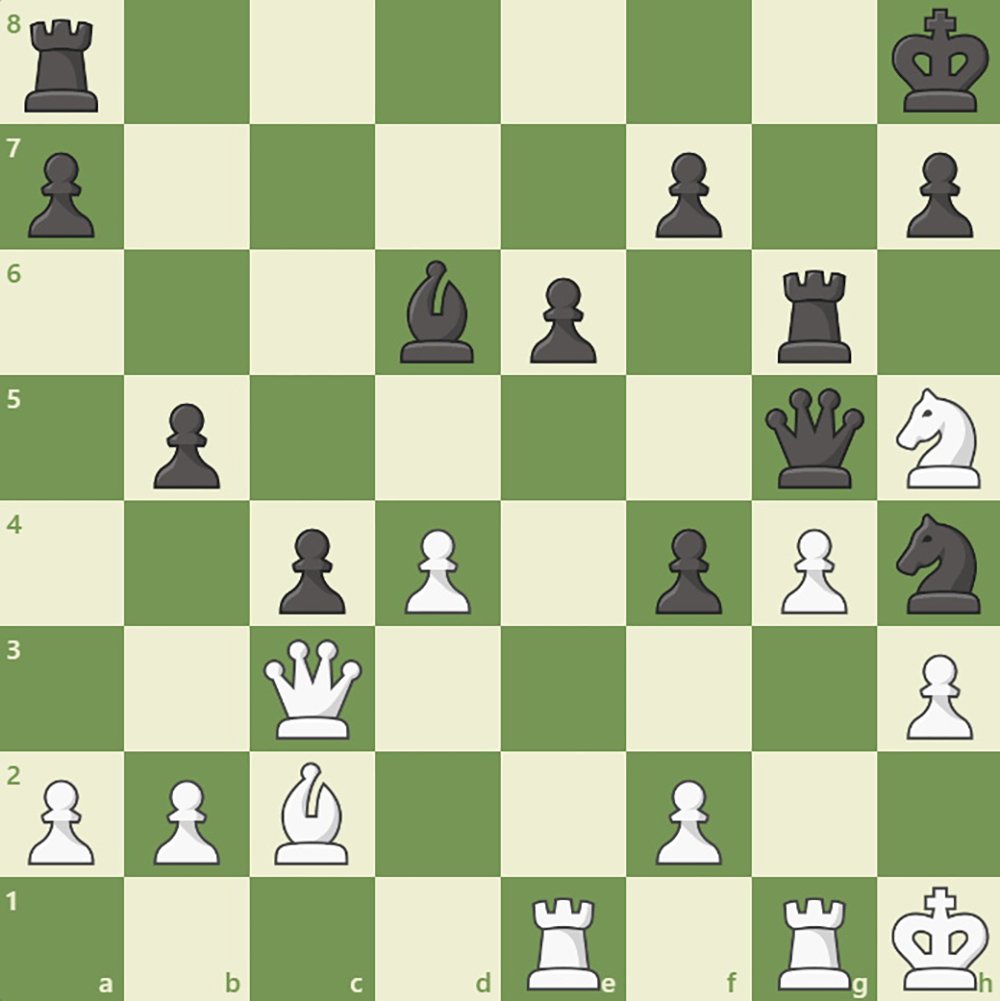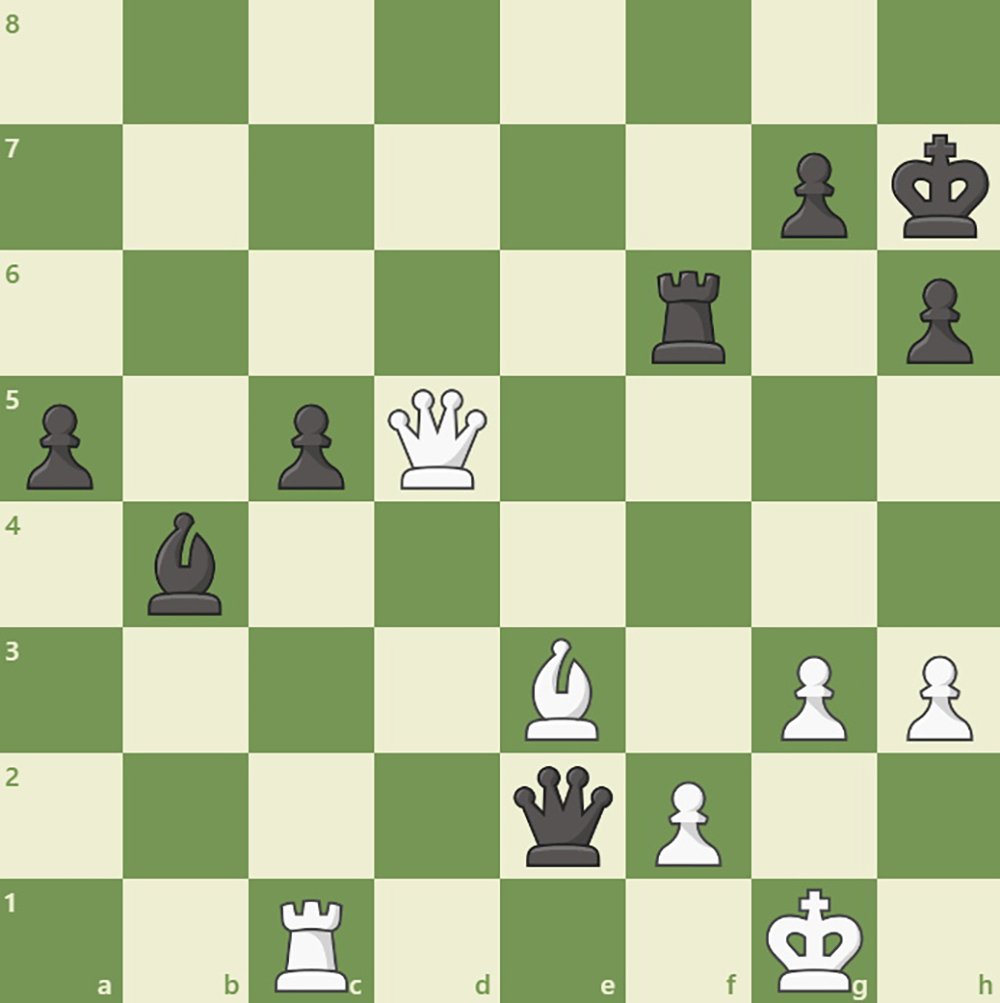
Unlike most episodes of The Link’s Gambit, which explain particular tactics or ideas, this week’s column will instead focus on summarizing the greatest moments from the 2023 World Chess Championship between Grandmasters Ian Nepomniatchi of Russia and Ding Liren of China.
To first provide some background details, the prior World Champion was Norwegian Grandmaster Magnus Calrsen who held the title since 2013, having defeated challenger Ian Nepomniatchi in the 2021 World Chess Championship. However, this year Magnus decided not to play, stating, “I feel I don’t have a lot to gain, [and] I don’t particularly like [the championship matches].” Therefore, Nepomniatchi, the winner of the 2022 Candidates Tournament, which decides who will play in the World Chess Championship, played against Liren, who achieved second place in the Candidates Tournament. Replete with decisive games, this Championship was one of the most exciting in years, and this article will go over the games and moves that made it so incredible.

The wins and losses began early in the match: as soon as Game 2 in which Liren was playing with the white pieces and Nepomniatchi was playing with black. The position displayed in Figure 1 arose after a series of inaccuracies by Liren and well-timed positional moves by Nepomniatchi—black has attained an excellent position with pawns that take space on both the kingside and queenside, very strong attacking chances due to the open g file and immense potential for crushing piece activity. Therefore, the winning move that Nepomniatchi played in the game is the brilliant rook sacrifice: Rook takes g5. Firstly, the capture forces the f3 knight to take back on g5, allowing black to play knight takes d4, winning a pawn and activating both black’s knight and light squared bishop. Black can use the newfound piece activity and the bishop pair to create a strong attack against the white king. Additionally, black has powerful connected pawns on the c and b files which Nepomniatchi later used to create a passed pawn one square away from promotion. All the while, white’s rooks are suffocating on the backrank with little room to move; in fact Nepomniatchi ultimately won the game with a move that trapped one of white’s rooks because they have so few squares to maneuver to.
The position shown in Figure 2 is from Game 6 of the Championship with Liren as white and Nepmniatchi as black. After Game 5, Nepomniachti had a one-point lead—each win counts as one point, a draw is half a point, and a loss is 0 points—so the stakes were high for Liren to win the game and level the score. It is clear that white has a powerful attack against the black king with a queen and rook battery aimed at g7 and a super active knight anchored on g6 by the h5 pawn. However, many of the live commentators were, in fact, unsure of how white could break through blacks defenses, and if white doesn’t, black will promote the a pawn to a queen and win. But Liren saw the mating net technique that forces a win for white beginning with the quiet move queen to f7. Although it appears not to attack anything, the queen on f7 poses a devastating threat: The queen sacrifice queen takes g8 check. The idea is that after the queen is given up for the rook and the black king recaptures, white then has rook to a8 check and, whether the black king goes to f7 or h7, white has checkmate in one move with either rook to f8 or rook to h8 respectively. While black can delay the checkmate by immediately promoting the a pawn, forcing the rook to take it, and giving up one piece after the other, checkmate is ultimately unstoppable after queen f7. With that, Liren equalized the scores and the intense match continued.

If the stakes and nerves in Game 6 were high, they were to the moon in Game 12. Nepomniatchi with black once again had a one-point lead but this time, there were only two more games left of the 14-round Championship; if Liren with white failed to level the score before then, he would lose the match. In the position shown in Figure 3, Nepomnatchi had attained an advantageous position with an open g file, active pieces putting pressure on the white kingside and well-positioned pawns that take space on both sides of the board. It was at these pawns that Liren immediately stuck at with 1. a4, prompting Nepomniatchi to make his first minor inaccuracy of the game with 1… b4. While b4 is a good move, pawn to a6 keeping everything defended was the superior option. 2. Qxc4 Rag8, a natural looking move further applying pressure on the g file but another inaccuracy; Nf3 followed by Qc6 trades rooks and culminates in a winning endgame for black a little over 10 moves later. However, Liren blundered right back with 3. Qc6, missing the opportunity to equalize with (3. Bxg6 hxg6 4. Qc6 gxh5 5. Qxd6 Nf3) and most pieces come off the board into a relatively neutral position. After 3. Qc6, black is better due to Nf5, preventing Bxg6, and if gxf5, Qxh5 is crushing for black. However, once again nerves struck and Nepomniatchi blundered again, playing 3… Bb8 and allowed Bg6 with an advantage for white. But, of course, Ding Liren returned the favor with 4. Qb7 and black once more is better after Nf5, but Nepomniatchi instead played 4… Rh6 with an equal position. 5. Be4 Rf8, another inaccuracy defending the f7 pawn but hanging the b4 pawn with an attack on the rook. 6. Qxb4 Qd8 7. Qc3 Ng6 8. Bg2 Qh4 9. Re2 and at this point Nepomniatchi completely cracked under his nerves and made the devastating blunder 9… f5, attempting to strike at the kingside but white is easily winning after 10. Rxe6. After Rxe6, the black position is completely compromised as the black pieces are rendered inactive and incapable of preventing white’s attack and advancing d pawn. Nepomniatchi resigned a few moves later and the match was equalized once again and remained so by the end of the 14 rounds, so a tiebreak match with less time on both of their clocks began.
The first three games of the four-round tiebreak match had all ended in draws. With only one, low time game left of the entire Championship, everything was on the line for both players. Figure 4 is an equal position where Ding Liren with black has an extra pawn and passed a and c pawns but Ian Nepomniatchi with white has enough activity to counterbalance that. In fact, it seemed the game was headed straight towards a draw after the players repeated moves twice with 1. Qe4+ Kg8 2. Qd5+ Kh7 3. Qe4+ Kg8 4. Qd5+ Kh7 5. Qe4+ but here, to the surprise of the live commentators, Liren declined a draw by threefold repetition and blocked the check with 5… Rg6 with only a little over a minute left on his clock. The brilliance of the idea was swiftly made clear as Nepomniatchi immediately made a mistake with 6. Qf5 c4 7. h4, threatening to win the rook with h5. However, after 7… Qd3 the white queen can no longer pin the black rook to the king and black can simply further advance his c pawn and promote. 8. Qf3 Rf6 9. Qg4 c3 10. Rd1 Qg6 11. Qc8 Rc6 12. Qa8 and Liren would be completely winning if he pushed his pawn to c2 as white is rendered helpless to prevent blacks advances. However, Liren returned the favor with 12… Rd6 13. Rxd6 Qxd6, trading off black’s powerful rook that could have been used to help promote the pawn for white’s weaker rook and allowing the white queen to become active with 14 Qe4+ Qg6 15. Qc4. In fact, after 15… Qb1+ 16. Kh2 a4 17. Bd4 a3, the position is equal if white plays either h5 and white has sufficient counter play against the black king or Bxg7, sacrificing the bishop because after the black king captures, it cannot escape continual checks from the white queen. However, Nepomniatchi commited a final blunder with 18. Qc7 and black is completely winning with 18… Qg6 19. Qc4 c2 because white is helpless to prevent black’s passed pawns from advancing. The game continued 20. Be3 Bd6 21. Kg2 h5 22. Kf1 Be5 23. g4 hxg4 24. h5 Qf5 25. Qd5 g3 26. f4 a2 27. Qxa2 Bxf4 and here Nepomniatchi resigned as white cannot both defend the white king and prevent the c pawn from promoting—checkmate is forced in eight moves. With Liren’s victory in the final tiebreak game with only a minute on the clock, the tumultuous 2023 World Chess Championship came to an end and Ding Liren took the well-earned title of World Chess Champion.

Ethan Feder is a rising senior at Yeshivat Frisch, a chess enthusiast, instructor and player. The goal of his column is to teach and discuss chess concepts through example positions, high-level games and relevant puzzles, along with explanations. Feel free to contact him with any questions, suggestions or comments at ethan.feder@gmail.com.









